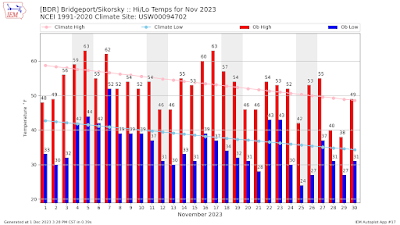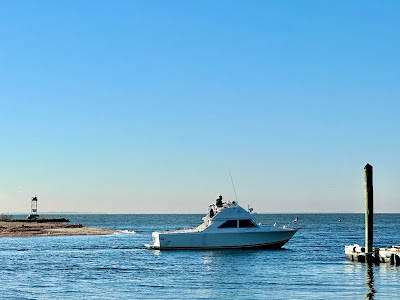The following was written by Brent M. Colley on the 50th anniversary of the October 14 & 15 devastating flood and printed by the Norwalk River Watershed Association
In 1955, the worst natural disasters to strike Connecticut since the hurricane of 1938 occurred within a two-month span. Two hurricanes, one tropical storm, and a pair of floods ravaged homes and businesses throughout the state in the months of August and October.
The August disaster was a result of back-to-back hurricanes in mid-August 1955. Hurricanes Connie and Diane arrived toward the end of a wetter-than-usual Summer, combining to drop over 24 inches of rain on the Northern regions of Connecticut between August 13th and August 20th, leaving record levels of flooding and widespread havoc in their wake.
Many Connecticut rivers, particularly the Housatonic, Naugatuck, Still, Quinebaug, Mad, and Farmington, overflowed their banks as never before; towns and cities in Litchfield and Hartford counties were particularly hard hit. The downtowns of many cities were devastated, including Winsted where the downtown was completely washed away. Property damage mounted into the tens of millions of dollars. Almost 100 people were killed, an estimated 4,700 were injured, and countless others were left homeless.
Surprisingly, towns and residents of the Norwalk and Saugatuck Watershed in the Southwestern section of Connecticut did not sustain rainfall accumulations as high as those to the north and were spared of flood conditions in August. Their time was yet to come.
The Cross Street
Bridge in Norwalk, underwater, collapsed, and buried in debris. This was the
highway from New York to Boston.
In October, a four day tropical storm dumped an additional 12-14 inches of rain on southwestern New England. This event was not as widespread as the August storms; however, the Flood of October, 1955, was devastating to the local communities along the Norwalk and Saugatuck Rivers. Millions of dollars and several lives were lost as a result of the rains that fell between Friday Oct. 14, and Monday Oct. 17th, 1955.
Newspaper reports from several local publications varied greatly on the amount of rain and the amount of time in which it fell. These numbers varied from the 12.58 inches reported by Georgetown Weatherman's George Howes to as much as 13.88 inches reported in Ridgefield. The time frame also varied from 36 hours to 48 hours depending on the source of information. Regardless of the exact amount and time frame, a great deal of rain fell upon an already saturated watershed on the weekend of October 14th, 1955.
The dam broke and was
washed away at the Gilbert and Bennett factory in Georgetown.
All of Fairfield County was hit, but Branchville, Georgetown, Norwalk, Wilton, and sections of Ridgefield were hit worse, because of the Norwalk River.
According to Charles Howes, Georgetown's weather observer, and his assistant, Conrad Borgensen. Starting at 7am on Friday morning, Mr. Howes recorded .62 inches by 5:30pm, and another 2 inches by midnight. By noon Saturday, another 2.23 inches had fallen. During the next 24 hours, 7.82 inches of rain was dumped upon this area.
By mid-afternoon Saturday, the Georgetown Fire Department and all available men were stationed at the bridges into town and at Branchville. The danger: fire and/or explosions from the washed-out gasoline tanks of the Branchville Motors garage, their contents riding the crest of the flood, causing alarm for several hours.
By 6pm the Norwalk River had flooded Route 7 from Branchville Station to just south of the Georgetown Motors garage. The Branchville train station, businesses, and homes in the area were swamped, the bridge near Branchville cemetery completely washed away.
Shortly after 6pm residents were evacuated from Branchville and Georgetown, some by boat, others by heavy-duty trucks. Residents who did not have relatives or friends they could not reach in the area were taken to the Georgetown Firehouse where they remained overnight.
Bridge approach
washed out entering Wilton from New Canaan (on the Silvermine River). A dog
checks it out.
The Press reported the Peatt family on Mamanasco Lake brought in boats and "went to Branchville to rescue some people whose houses were surrounded by still rising waters of the Norwalk River."
A house in Norwalk
that has become an island in a turbulent river. The floodwaters had dropped
from from their peak when this shot was taken.
Nazzareno Ancona reported seeing the gas station on Route 7 flooded with water half-way up the garage door, water coming in the back door and coming out the front door "bringing everything with it," he said.
The dam at Perry's Pond, on Route 53, above Georgetown (now Route 107) gave way a little before 9pm Saturday night sending a rush of water into the heart of Georgetown. In addition, there was a landslide about a half mile up Route 53 (now Route 107), but cars were able to get through.
At 9pm a northbound train out of Norwalk came to a halt in the "wilds" between Honey Hill and Seeley Roads in Cannondale. The stalled train and its 83 passengers would remain stranded for the next 14 hours until three U.S. Army helicopters were able to airlift them to safety in a rescue mission that spanned 3 hours. They were all transported to Danbury via buses.
By 10:30pm water was 4 feet deep in the center of Georgetown. Factory pond was so high that residents later reported water up to their porches on Portland Avenue.
The nearly 8 inches of rain that fell between Saturday and Sunday taxed the dams along the Norwalk River, in all likelihood already fatigued by the storms of August, to such an extent that at approximately 10:30pm the dam at Great Pond gave way, sending a surge of water through the Norwalk River Valley with such force that all dams and most of the bridges in its path crumbled in its wrath.
The concrete bridge on Route 7, which is parallel to the railroad trestle (between DeLuca's Hardware and Bob Sharp), crashed into the river just before 11pm Saturday night, and shortly after that the trestle, undermined by the flood waters, collapsed as well, leaving the tracks still spanning the river, but with no visible means of support.
Temporary bridge for
Route 7 over Norwalk River.
At approximately 11pm, there was an audible "pop" as the embankment surrounding the the dam that had served the Gilbert & Bennett factory for over 100 years gave way sending water levels in Georgetown and through the factory to heights estimated from 8 to 12 feet deep.
Connery's Lumber Yard was washed away when the dam broke at the factory, and evidences of it could be found as far down the Norwalk River as Cannondale.
It's safe to say Harold Connery was a good humored man. Following the Flood, Harold was asking all his customers downstream if they had received the shipments of lumber he sent them.
The dam at the "old mill" (Old Mill Road) went shorty after the dam at the factory gave way, sending more tons of water down the valley.
As dams to the north succumbed to the avalanche of water surging down the valley, Cannondale and Wilton were next in the river's path of destruction. Flood waters inflicted heavy damage on the New Haven Railroad tracks at several points in Wilton. The trestle in Cannondale, just below what was left of the Cannon Grange Hall, collapsed. At the northern approach to the Cannondale trestle, the tracks twisted crazily off their embankment; and were seriously undermined at several other points throughout Wilton.
Four Wilton bridges spanning the Norwalk River - at Honey Hill, Seeley, Old Ridgefield, and Kent Roads - were wiped out, as were bridges at Silver Spring and Cedar Roads. Washouts made other bridges at Old Mill Road, Wolfpit Road, Arrowhead Road, and Cannondale impassable; but these washouts and others in Silvermine were patched up with gravel on Monday and Tuesday by town road crews and contractors.
In houses along Cottage Row in the center of Wilton which frequently experienced cellar floods but nothing worse, the water rose above the main floors- almost to the ceilings in the Grover Bradley and George Barringer homes. The home of Mrs. Millie Beers in South Wilton was twisted off its foundation. Mrs. Beers was rescued by two firemen.
The Silvermine River in the southwest corner of Wilton also went on a rampage. Several families along the river fled their homes as the raging waters threatened to wash them away. Many evacuees spent the night with neighbors; several families slept in the Wilton Congregational Church and parsonage, the firehouse and town hall.
At Wall Street in Norwalk, more details of the
destruction along the Norwalk River.
Over in Redding the damage was primarily roadway and bridge wash-outs along the Saugatuck and its tributaries.
The small brook that courses down Route 53 (now 107), at the top of the Glen Hill, became a raging torrent undermining the road there. The road was passable until late Monday afternoon when, S. Harold Samuelson, first selectman of Redding, ordered the road closed.
Halfway down the Glen Hill, a landslide blocked the highway until Sunday afternoon, when a bulldozer pushed a one-way lane through it. At the foot of Glen Hill, the road was impassable over the bridge at the junction of Routes 53 and 107; the bridge withstood the raging Saugatuck, but the roadway was completely washed away on either side. On Monday afternoon, a car was still standing in a deep hole that had been the approach to the bridge, leaning crazily against a telephone pole. Further downstream was another car in the river. Its occupants had abandoned it on the road Saturday night.
Upstream was the site of the tragedy which saddened the whole town. At the Diamond Hill Road bridge, Edward Arthur Phoenix, 53, and his wife, Veronica, 47, of Fox Run Road lost their lives on Saturday night when the Phoenix's car was swept into the river below the bridge. Mr. and Mrs. Phoenix were coming home from dinner at the home of Mr. and Mrs. Matthew Blair of Great Pasture Road.
A three and one-half hour frantic and near successful attempt to rescue Mrs. Phoenix from a tree, after her husband had been swept to his death, made the tragedy even more horrifying. While volunteer firemen and neighbors tried vainly to reach her in the darkness she clung doggedly to the tree, aware of the efforts to save her. But at length her strength failed and she fell into the river and drowned. At one time the rescuers were within 20 feet of the tree but were turned aside by the tremendous force of the torrent.
An Army helicopter spotted the woman's body Monday morning, 1,500 feet from the Diamond Hill Bridge. Mr. Phoenix's body was recovered early Tuesday about 50 feet further downstream.
All approaches to West Redding were blocked; not a bridge was left intact by the tributaries of the Saugatuck River. Route 53 all the way to Bethel was blocked, the only route to Bethel or Danbury left open was the Black Rock Turnpike, which people reached by devious ways.
Paul









.jpg)






































